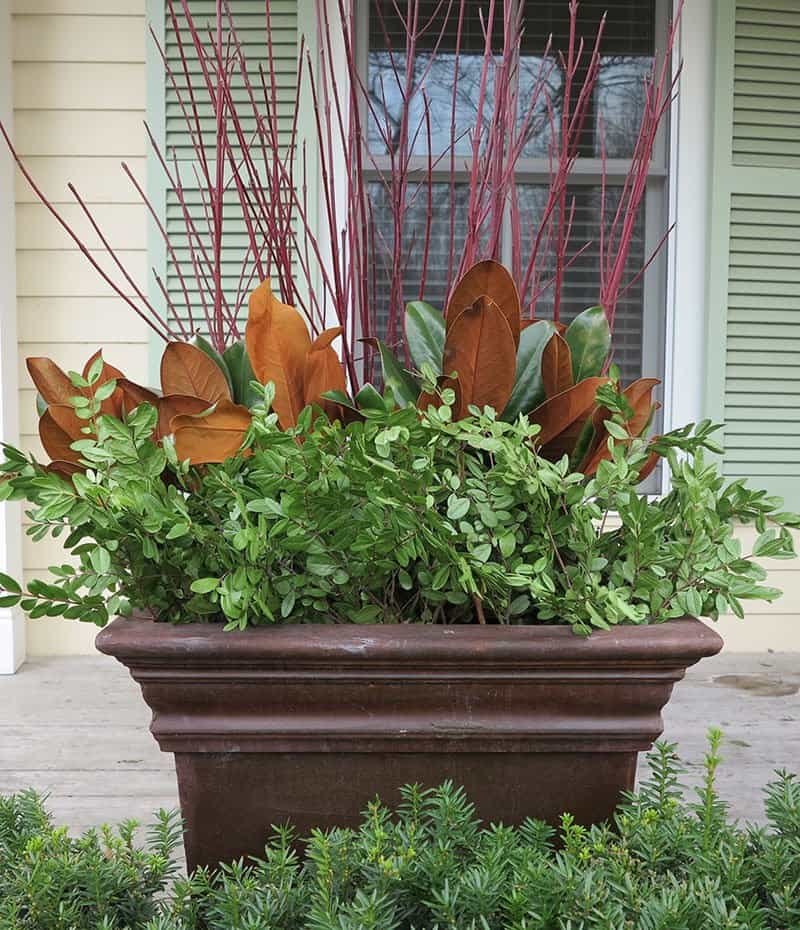
Now is the time when many shrubs and trees go through their annual sacrifice of branches to help fill our outdoor containers with colour and texture during winter. I fill two large containers on our front porch in early December, choosing branches that will last until it’s time to replace them with pansies next spring.
Look in your garden for materials that will add interest to the usual white pine, cedar and spruce boughs. Astilbe and nigella seedheads, corkscrew hazel and variegated euonymus branches, and twisty grapevine stems are just a few examples. When cutting stems from any deciduous or evergreen plant, don’t remove too much from a single specimen and make clean cuts back to a main stem. Also, try to take branches from the side of a plant not on view.
My favourite way to anchor a winter arrangement is to insert the branches into soil, hoping that it hasn’t already frozen solid by the time I’m ready to get creative. Alternatively, wedge bricks of wet floral foam into leftover plastic hanging baskets, inserting the branches deep into the foam, and then sink the finished arrangement into outdoor containers.








